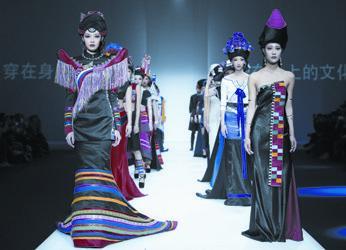Tradition Gets A New Look
2021-09-15ByTaoZihui
By Tao Zihui

2017, the Moulin Rouge, Paris. A young Chinese man dressed in a traditional Miao costume was stopped by a doorman because the theater dress code recommends “elegant attire.”
“What Im wearing is the formal costume of my hometown, the dress code.”He explained. The doorman let him in and sighed, “I like your outfit. Where can I buy it?”
This young man, Zhang Kejia, is a costume designer. Originally from the Miao ethnic group in Guizhou Province, he first dabbled in film and television design before pursuing further fashion studies in France.
The 33-year-old has been forging a deeper connection with his Miao identity ever since that night at the Moulin Rouge. He has been exploring the integration of traditional mysticism and the modernity of the world.
“We do have our own attires to showcase etiquette within the ethnic group. Why not try and make the old into something new to be better adapted to an international setting?” Zhang told Beijing Review. “During many ceremonial or diplomatic events, ethnic costumes are a symbol of tradition. And this is exactly what we want to carry on.”
Tradition to tassels
A blend of designing philosophies with an ethnic twist has thus far inspired several of Zhangs designs, which also build on the theme of diversity.
For Zhang, his history-inspired fashionable overhaul may become a good way to further explore the beauty of ethnic traditions.
The wonderful thing about Yunnan Province, where he grew up, is that it boasts spectacular natural landscapes, widespread biodiversity and an array of ethnic groups. Among Chinas 56 ethnic groups, 26 reside in this province, a fruitful foundation for Zhangs fashion design. Creativity has all the space it could possibly desire to flourish.
Most people are often baffled by the designs of the traditional ethnic costumes, their original materials, their bright and colorful looks, the “strange” tailoring and the stunning variety of hues. Its all one big splash of fashionable complexity.
Zhangs studio is located inside Beijings Gaobeidian Art Zone. Among the pictures on the wall, one of them is of well-known Pumi singer Rongbaxinna performing in the countryside dressed up in a red and blue dress designed by Zhang.
Before finding Zhang, the singer had sought out other designers yet their works were either too modern and lacked original features, or came bearing too many ethnic elements to wear on stage. She wanted a gown that not only featured the characteristics of the national culture, but could also be worn when the dress code veered toward the more formal.
